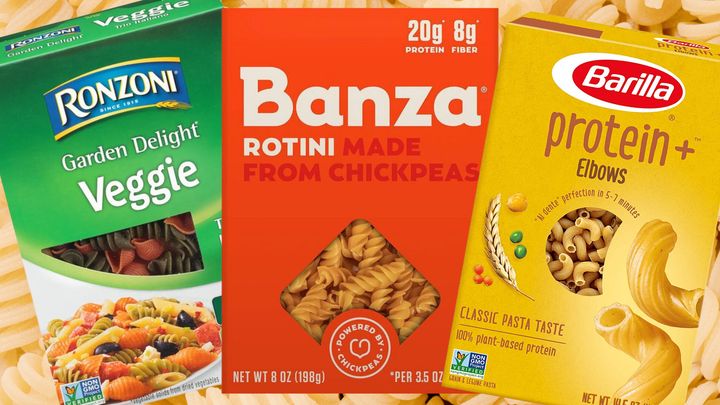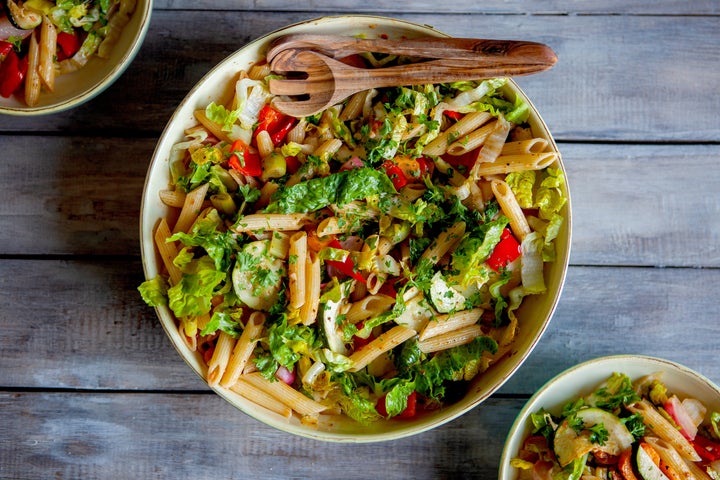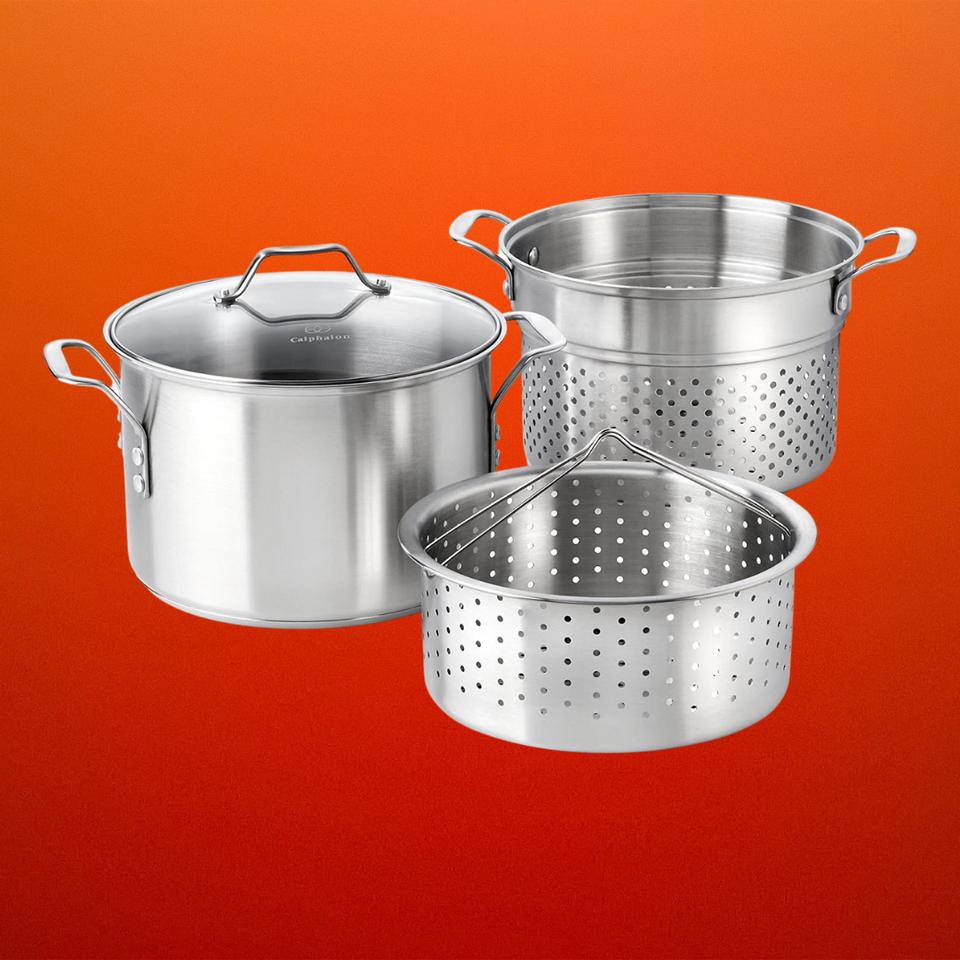
Traditional pasta, a beloved staple in many a weeknight dinner, sometimes gets a bad rap on the health front, maligned with other simple carbohydrates like bread and pizza. As a result, a host of “healthy” pasta options have sprung up on store shelves: Protein pasta, veggie pasta, whole-grain pasta, cholesterol-free pasta, high-fiber pasta and even gluten-free pasta are all available today.
Italians have a lot of thoughts about what tastes best. But are these alternatives actually healthier than a regular blue box of durum wheat pasta?
To find out, HuffPost spoke with dietitians to discuss whether swapping out your traditional pasta for another version makes a difference and who, if anyone, would benefit from these other options.
Take all of the following information with this caveat: Specific dietary needs (such as celiac disease, food allergies or other sensitivities) should always dictate which choices are best for you. Folks with a gluten intolerance, gluten sensitivity or wheat allergy already know they can’t eat regular pasta and can benefit from the list of alternatives at the grocery store. Swap out or add in higher-fiber or protein-powered options if you have pre-diabetes, diabetes or polycystic ovary syndrome, suggests registered nutritionist Sue-Ellen Anderson-Haynes.
Carbs are an essential part of a balanced diet.
Wheat-based pasta has had a tough go of it over the past 10 years. Whether it was Atkins, the No White Diet, keto or now the carnivore diet, the rhetoric is that carbs like pasta can make you gain weight. But carbohydrates, like wheat pasta, are an essential part of a balanced diet, according to Anderson-Haynes, who said it is a “major nutrient needed in larger amounts in the diet, so it should not be omitted, just balanced or portioned for that person’s need.”
Traditional pasta is usually the most affordable option.
Affordability has to be part of the conversation as food prices continue to affect many American families: Dry wheat pasta is a budget-friendly, versatile and shelf-stable ingredient many folks rely on. While it has recently increased in price, it’s still more affordable than many of the alternative options, which can be triple the price. For example, the store brand of regular penne costs about $1.25 for a 16-ounce box, whereas Barilla’s chickpea penne pasta costs $3.49 and is half the size, coming in an 8.8-ounce box.
Are the ‘healthy’ pastas really that much healthier?
We hate to break it to you, but a side-by-side comparison of the nutrition labels of regular pasta and of most alternatives show they aren’t much different. A serving of pasta is 2 ounces, or 1 cup cooked, and contains 6 grams of protein, 2 grams of fiber and 42 grams of carbs. Wheat-based pasta also has other good stuff: nutrients like iron (10% of your daily value) and B vitamin folic acid (25% of your daily value).
“For the most part, nutrition facts on alt pasta do not significantly differ from the classic wheat variety,” registered dietitian Amanda Frankeny told HuffPost. “The carbohydrates are not significantly less, they only boost protein or nutrients a bit, but they can help you diversify your diet or avoid wheat. And regardless of the kind of pasta you choose, this food is meant to be a small part of your diet balanced with fruits, vegetables, proteins and meats, milk and dairy, and other grains.”

A standout among the alternatives is edamame pasta with 22-24 grams of protein and 15 grams of fiber per serving. Dietary guidelines recommend adults aim for 20-30 grams of protein per meal, making it substantial all on its own. Registered nutritionist Marissa Meshulam said: “The more fiber and protein in pasta, the more satisfying and blood-sugar-balancing it will be. Fiber is also a nutrient that is key for our gut health by promoting good digestion and serving as food for the good gut bacteria. The increased fiber content can make a legume- or bean-based pasta a great option.”
Lentil and chickpea pastas have only about 11 or 12 grams of protein and slightly more fiber (around 6 grams) per serving, about twice as much as regular wheat pasta. Looking to bulk up the meal? Add protein like ground beef and fiber like tomatoes, carrots and celery, though you’re likely already doing that.
Many of us have swapped our white bread for whole wheat, and dietitians say it’s a good idea to do the same for pasta. Frankeny explained, “Whole-wheat pasta kicks fiber, protein and nutrients up a notch. Rather than removing nutrients in a pasta-making process, the flour in whole-wheat varieties remains intact. This makeup helps to reduce spikes in blood sugar and creates hefty pasta suitable for lots of sauce.” If you want a whole-wheat option, look for “100% whole wheat” on the label, and whole wheat should be listed as the first ingredient.
Looking for a lower-carb option? Veggie-based pasta like cauliflower isn’t the way to go, despite the glow-up the veg got in 2018. Unlike zoodles or rice options, these kinds of pasta are made by dehydrating vegetables and adding other flours to form a dry pasta. According to Meshulam, “Many of the ‘veggie’ pasta is loaded with other starches like corn flour or potato flour to make them more palatable, meaning that they are not a lower carb option as some might think. Some tend to have more fiber than white pasta. However, they are overall quite low in protein.”
Nutrition isn’t black and white.
Should you cut back on your servings or swap your macaroni for an edamame-based one? It depends on your preferences, allergies, age, lifestyle, etc. Do you enjoy eating one over the other? Have a gluten allergy? If you’re already eating a balanced diet, you’re likely getting enough protein and fiber from other foods, according to Frankeny.
“Nutrition is less about squeezing in the most nutrient-dense food, like high-protein pasta, and more about your healthy relationship with it,” she added. “There is no need to say something you snack on is ‘bad’ or ‘good’ for you. That label can take away your satisfaction and the pleasure of eating. Don’t let your judgment cause you to miss all the incredible flavors of your pasta dish!”
There’s room for all types of food in a healthy, balanced diet if they’re foods you enjoy. My cupboard contains durum wheat, chickpea and high-fiber pasta, but I stop at cauliflower because I think it smells like farts.
